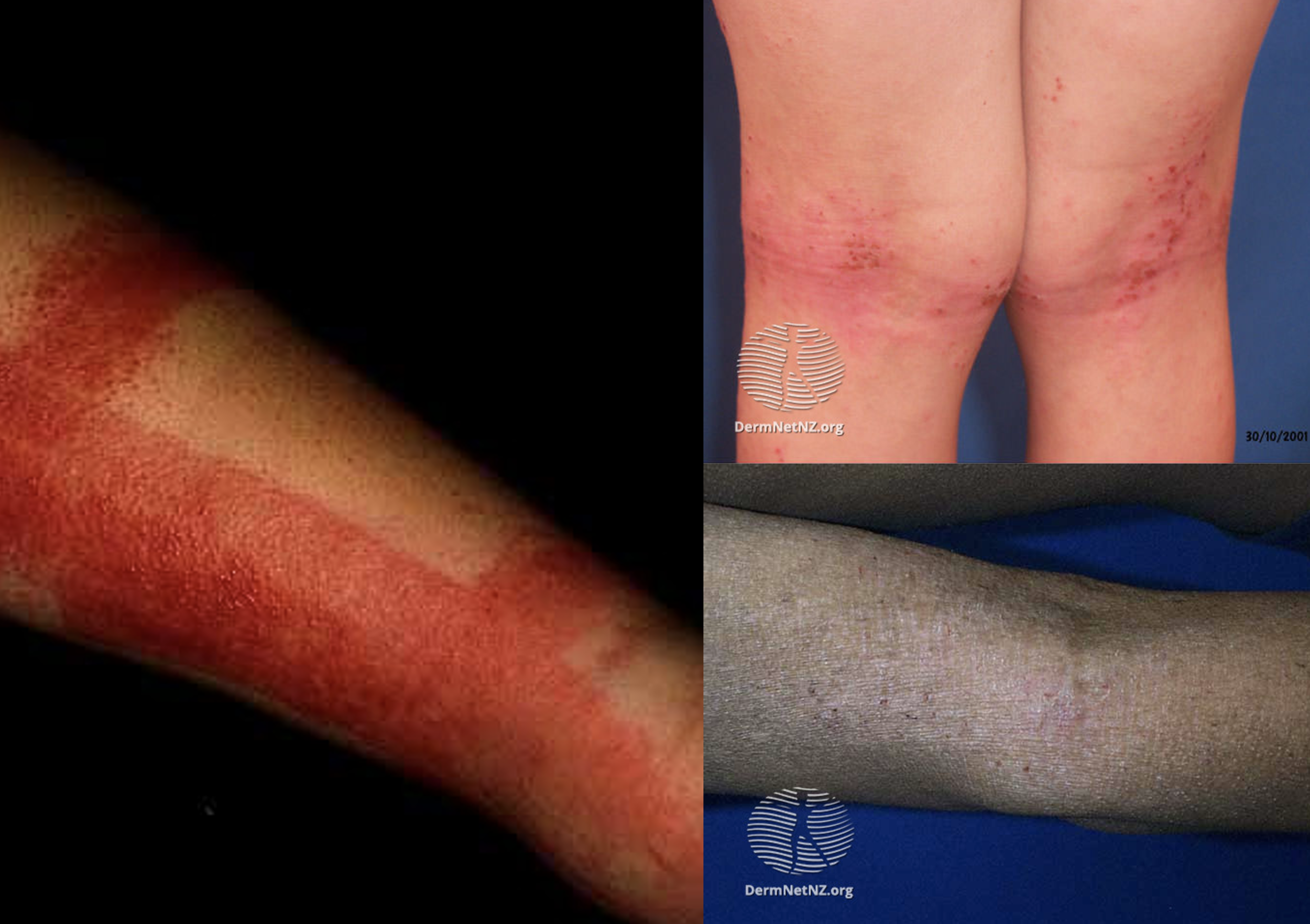All in Medicine & Pharmacy
An exciting blog for students who struggle to interpret or present chest x-rays methodically on the ward. The DRS ABCDE is an easy and meticulous method to provide relevant information on what you see and become confident in yourself and your interpretation.
Dermatitis and psoriasis are common skin conditions. They both display clear distinctions with some similarities.
Dermatitis has been found to affect 1 in 5 people within the population ranging from different varieties, presenting pattern, and its most likely causes. Find out about its aggravating factors, clinical presentations, variants, and treatment.
Psoriasis is a common, chronic and non-infectious skin disorder. Psoriasis can be classified into several subtypes as there are variable presentations. Learn more about its aggravating factors, variants, clinical features, and treatment.
One of the key aspects to prevent injury and harm for oneself and others is to have good de-escalating skills. In this blog, I will cover some of the key steps one can take to reduce the chance of having a patient harming themselves or others.
In this edition of Bite-Size, I talk about substance dependence I witnessed whilst being on my placement, which made me think of how that patient got into that situation. Addiction must be seen as a very complex disease, and no one should be blamed for their situations. What are the best approaches to solve substance dependence in society?
In this edition of Bite-Size, I talk about substance abuse and its relation to medicine. The medical world is challenging and stressful, what are some of the strategies that we can do to avoid substance dependence?
This is a 2-part blog on Bordetella pertussis (B. pertussis) a disease also known as whooping cough. Part 1 will talk about the pathophysiology and management of B. pertussis, whereas part 2 will talk about the ethics surrounding the case study. This is part 2 with a focus on ethics.
This is a 2-part blog on Bordetella pertussis (B. pertussis) a disease also known as whooping cough. Part 1 will talk about the pathophysiology and management of B. pertussis, whereas part 2 will talk about the ethics surrounding the case study. I really enjoyed this case study, especially when ethics are involved.
In this edition of Bite-Size, I reflect on what I have done well to create safe medical practices and discuss some of the mistakes I have done involving needles. Reflecting is healthy and helps in sharing ideas with colleagues and improve ourselves as healthcare professionals.
In this edition of Bite-Size, I wanted to talk about medication safety and their impact on patients. Medications are as present as the disease itself, and awareness and education are essential. As medical students, we have the opportunity (with the luxury of time) to talk to our patients without being on a strict schedule.
In this edition of Bite-Size, I wanted to talk about professional boundaries and its presence in medicine. It can be tricky to form a doctor-patient professional relationship and also making sure no boundaries are crossed, especially when medicine is becoming a lot less formal than it used to be.
In this edition of Bite-Size, I wanted to talk about a topic regarding good patient care with a focus on alleviating pain and distress. Dr Rana Awdish who authored In Shock: My Journey from Death to Recovery and the Redemptive Power of Hope, inspired me and provided many insights of what it is like to be a patient.
In this edition of Bite-Size, I wanted to talk about two topics regarding safe medical practices in the healthcare system. That is the use of abbreviations and dose designations, and the writing of verbal orders (VO). I thought these topics are interesting, are relevant and have quite an impact on health.
During the second year of my MBBS degree, I had to complete my 1-month placement in a rural town. I went midyear to a small quaint city called Benalla in Victoria. I decided to record and make a little video of what it felt like to go to Benalla City and speak about my placement, its health and what to do as a tourist.
Since I have started my medical studies in Townsville, which is in Queensland, Australia, I always heard that Queensland is the “skin cancer capital of the world” and decided to look into this claim. So why is there so much skin cancer in Australia and New Zealand? What can we do to protect ourselves?
Depending on where (such as which organ) and what type of damage occurred in the body, necrosis will have a specific morphological pattern. There are six distinct patterns that are identifiable, and by identifying the pattern, an underlying cause could be identified.
It is essential for the human body to safely get rid of cells, and there are many reasons why they do that. Apoptosis describes the normal and controlled part of cell death. Necrosis comes from the Greek origin nekrōsis meaning “death” and later moved to modern Latin to necrosis.







































